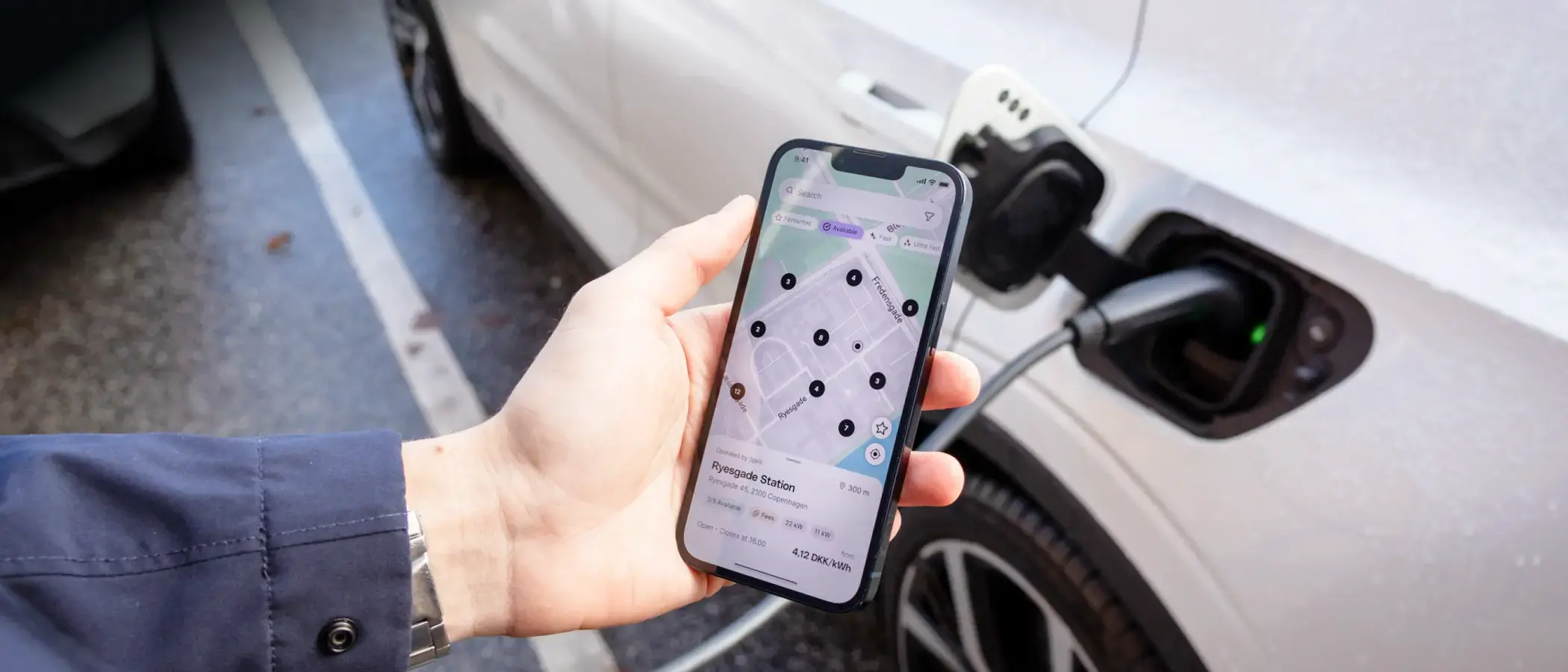- Intelligent Charging: Refers to EV charging solutions that optimize charging efficiency, manage load distribution, and interact with the electricity grid to reduce costs and improve performance.
- Spirii Connect: A backend system that connects charging points for real-time data exchange, offering features like remote support, invoicing, and app integration.
- Plug'n Charge: Charging starts automatically once the cable is plugged into the car, simplifying the process for users with private charging stations.
- Load Management: Adjusts charging speeds based on available electricity, ensuring efficient use in multi-user environments like housing associations and car parks.
- Home Power Protection: Automatically manages charging to avoid overloading household circuits, ensuring safety during home charging.
- Peak-Shaving: Automatically charges EVs during off-peak hours to reduce costs and manage electricity demand.
- Frequency Control: Adjusts charging speed based on grid frequency to support grid stability.
- Building Power Protection: Ensures that EV charging does not interfere with other building systems, optimizing available electricity for both EVs and infrastructure.
Spirii’s state-of-the-art and professional backend system Spirii Connect
One of the basic conditions for intelligent charging is that the charging point is connected to a backend system and that the two can exchange real-time data. All Spirii charging points are connected to Spirii’s state-of-the-art and professional backend system Spirii Connect.
Spirii Connect offers the following service:
- 24/7/365 remote customer service support
- Control centre access to support and regular software
- Updates
- Invoicing
- Roaming
- App integration
- Automated solutions that interact with our external partners
Read more about charging equipment and Spirii Connect services.
Intelligent charging with Spirii
The concept ‘intelligent charging’ is often used indiscriminately by the media. Spirii combines automated solutions, smart connections and optimised electricity grid interaction as well as a practical and simple user interface that supports various specific customer requirements for configuration during installation.
Plug’n charge
If you have your own parking spot at home where a charging point can be installed, you might want to start charging simply by plugging the cable from the charging point into the car. We therefore believe that it should be possible to configure the charging point by preparing it for ‘plug’n charge’, so that users do not need to use an app or a charging tag to authorise and start the charging. This means that charging starts automatically when the plug from the charging point is plugged into the car, allowing you to get on with your business.
Restricted access
Other users need to be able to authorise charging with a charging tag or an app so that unauthorised persons cannot charge on their private charging point where the electricity is paid for by the homeowner/lessee. Restricted access might therefore also need to be supported.
Optimisation of charging (Load Management)
Housing associations and multi-storey car parks often need advanced load distribution that takes into account the different charging speed of electric cars in the same charging system – and which optimises charging speeds between electric cars based on the relationship between the charging point protection and cable design. Moreover, dynamic upward and downward adjustment of charging speed may be required based on external requirements from the local electricity grid.
Home Power Protection
Similarly, a need may exist for automatic charging control based on how much electricity is available in a household. This means that the electric car charges at the electricity volume that is available without the fuses turning off. This is what Spirii calls ‘Home Power Protection’.
Peak-shaving
Another need that is currently high on the agenda for intelligent charging solutions is rate-based charging where the user’s car is automatically charged when the electricity is the cheapest or where the user can decide at which point during the day the electric car should be charged. This will typically be outside peak periods and during the night when electricity is the cheapest. The central players (local utility companies and grid companies) might also want the charging of electric cars to part of ‘peak-shaving’ as part of a greater perspective, which means that loads from a large volume of consumers, such as electric cars, can be managed in case of temporary supply shortages either locally, in larger areas or nationally.
Frequency control
In order to support the supply capacity and stability of the electricity grid, it is increasingly necessary to be able to manage charging based on the grid frequency within the permitted area as required by Energinet.
This means that electric cars are charged faster or slower depending on whether the frequency is within the permitted range of deviation from 50 Hz. The requirements for deviations depend on where you live in Denmark. Frequency control can be supported by regular charging from a charging point (if the charging point can handle such advanced functions).
Building Power Protection
Companies, housing associations, etc. may need electric cars in the company’s parking lot to charge at the electricity available, while other electricity-demanding elements like lifts, welding equipment, cooling systems, canteen appliances, etc. can be used without causing any problems. We call this type of intelligent protection for ‘Building Power Protection’, which in the early stages of replacing the fossil fuel-powered car fleet with electric cars can help save the company a lot of costs of installation and updating that results in oversupply.
Explore market insights and operate your charging business effectively with our resources.







